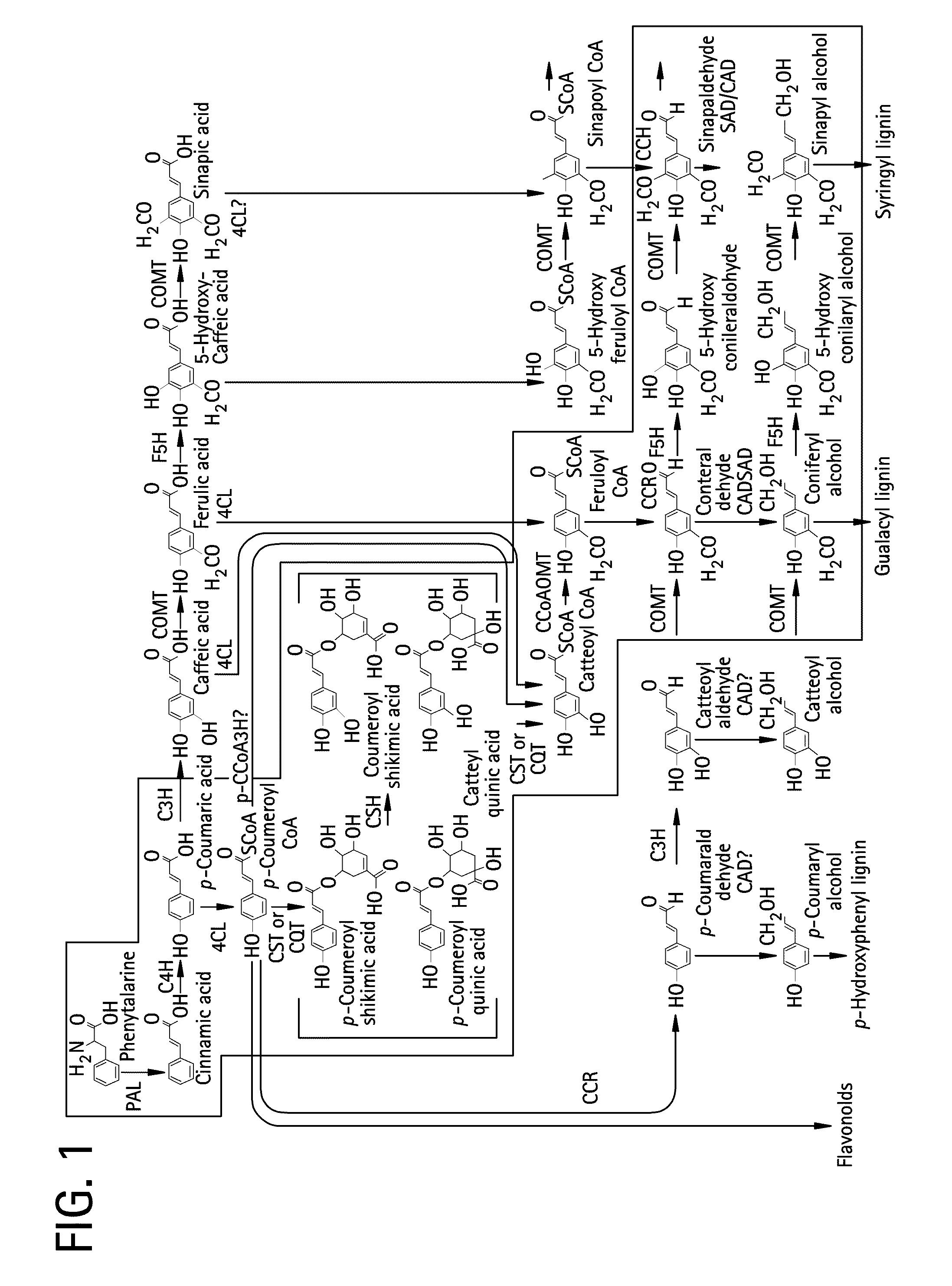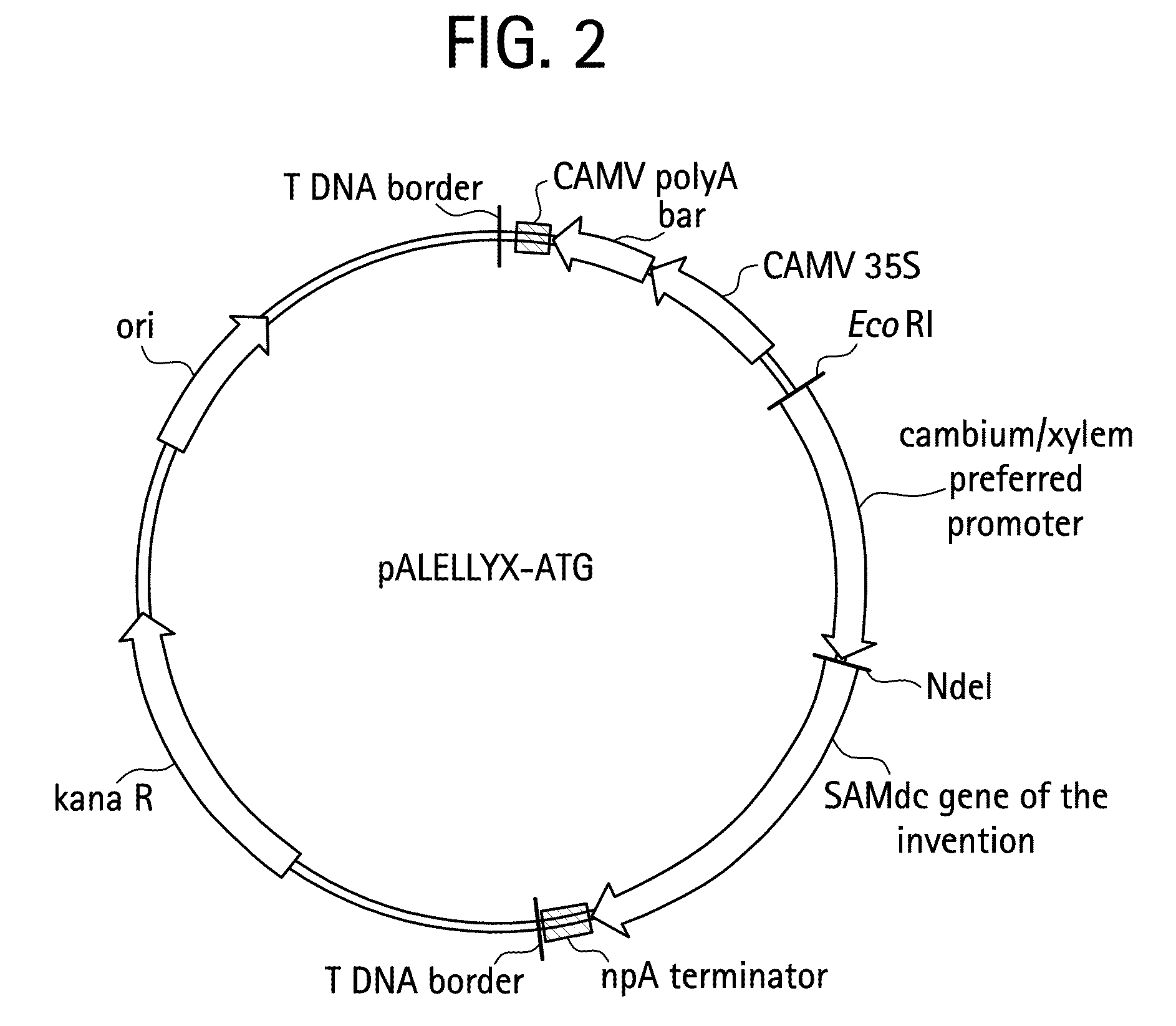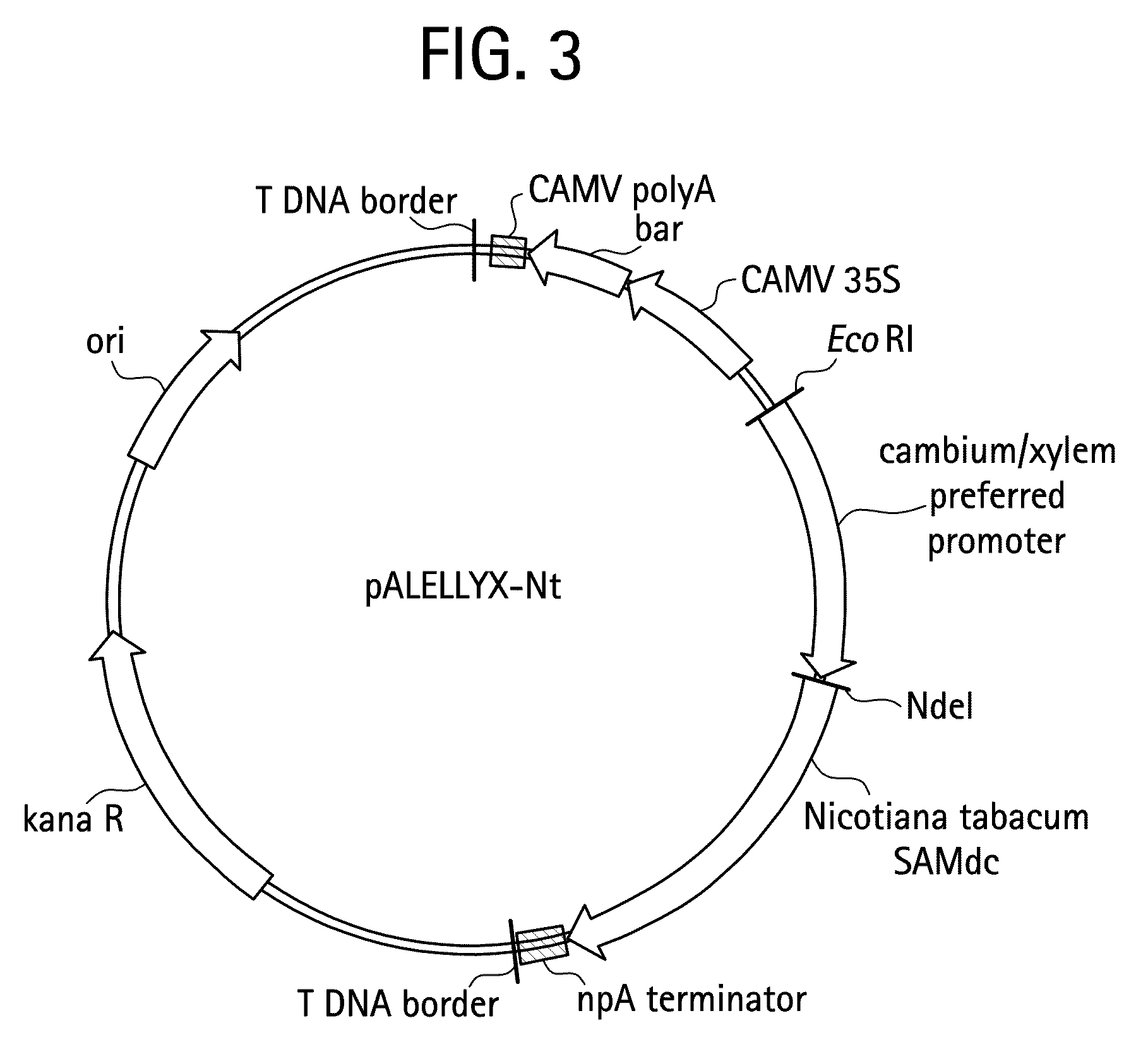Altering lignin and wood density
a technology of lignin and lignin, which is applied in the field of molecular biology and regulation of wood composition, can solve the problems of limiting the use of lignocellulosic materials, affecting the yield of cellulose, and affecting the content and wood density, and achieves the effect of increasing the ratio of syringyl lignin
- Summary
- Abstract
- Description
- Claims
- Application Information
AI Technical Summary
Benefits of technology
Problems solved by technology
Method used
Image
Examples
example 1
Isolation of the Tobacco cDNA Encoding SAMdc Enzyme
[0106](a) Preparation of mRNA From Tobacco Leaves and cDNA Synthesis
[0107]RNA was extracted from leaf tissue of Nicotiana tabacum using Trizol reagent (Invitrogen). A cDNA pool was prepared from the isolated total RNA using a commercially available cDNA Superscript II Amplification Kit (Invitrogen) or the like. The cDNA pool can then be used in RT-PCR experiments in which the isolated total RNA is used as template, and Superscript II reverse transcriptase (Invitrogen) and oligo(dT) primer are used to synthesize the first-strand cDNA and double-stranded cDNA is obtained by the subsequent polymerase reaction, using gene-specific primers.
[0108](b) Design of PCR Primers
[0109]A DNA sequence coding for SAMdc from Nicotiana tabacum has already been determined and deposited in the GenBank under accession number AF033100. Based on this sequence, DNA oligomers were synthesized as primers for PCR, including either the region around the first c...
example 2
Preparation of Transgenic Arabidopsis and Nicotiana Plants
[0114]The gene obtained in Example 1 above was introduced into a plant host to produce transgenic Arabidopsis and Nicotiana plants.
[0115](1) Preparation of Constructs and Transformation of Agrobacterium
[0116]Expression constructs can be prepared by cleaving the SAMdc genes obtained in 1 above with suitable restriction enzymes so as to include all of the open reading frame and inserting the gene into the plant transformation vector pALELLYX-ATG (FIG. 2) together with an appropriate promoter. For example, the tobacco SAMdc gene obtained in Example 1 was cloned into the aforementioned expression vector downstream to a xylem-preferred tubulin gene (TUB) promoter from Populus deltoides as set forth in PCT patent application No. PCT / BR2005 / 000041, filed Mar. 28, 2005, which claims for the priority date of Ser. No. 60 / 560,227, filed Apr. 6, 2004 (FIG. 3). The resulting expression construct is amplified in E. coli, and then transfor...
example 3
Histochemical Analysis of Transgenic Plants
[0133]Histological staining of lignin can be performed to analyze the amount of lignin in the vascular system of transformed and control plants. Briefly, stems of Arabidopsis TUB-SAMdc-Nt transgenic, Nicotiana benthamiana 4CL-SAMdc-Nt and control non-transgenic plants were free-hand sectioned with a razor blade, and the resulting sections were stained for total lignin with phloroglucinol-HCl (1% phloroglucinol in 6N HCl) for 30 minutes. Zhong et al., Plant Physiol., 123, 59-69 (2000). Alternatively, tissues were sectioned in a microtome (Leica RM2255) and subsequently stained with phloroglucinol. The histologically stained sections are observed under a dissection microscope using bright- and dark-field illumination (FIGS. 12 and 14).
PUM
| Property | Measurement | Unit |
|---|---|---|
| temperature | aaaaa | aaaaa |
| temperature | aaaaa | aaaaa |
| volume | aaaaa | aaaaa |
Abstract
Description
Claims
Application Information
 Login to View More
Login to View More - R&D
- Intellectual Property
- Life Sciences
- Materials
- Tech Scout
- Unparalleled Data Quality
- Higher Quality Content
- 60% Fewer Hallucinations
Browse by: Latest US Patents, China's latest patents, Technical Efficacy Thesaurus, Application Domain, Technology Topic, Popular Technical Reports.
© 2025 PatSnap. All rights reserved.Legal|Privacy policy|Modern Slavery Act Transparency Statement|Sitemap|About US| Contact US: help@patsnap.com



